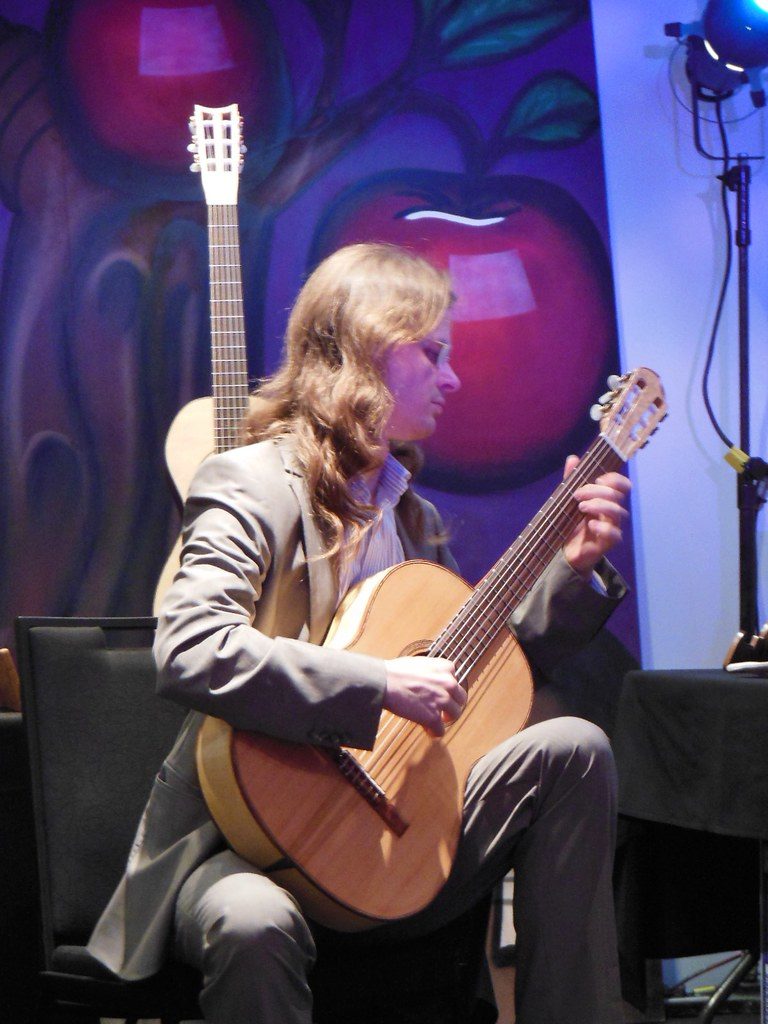Posts Tagged ‘Classical Guitar Technique’
Classical Guitar – Too Many Things Wrong (Musicians, Posture, Injuries, Pain, Strain, Psychology)(Albuquerque)
This ebook, An Alexander Technique Approach to Classical Guitar Technique, is published on this website in a PDF format. It is very detailed and practical, and it will give you the physical tools you need to take the limits off of your ability to create the accurate guitar technique you want without sacrificing your body.
This ebook is also for sale on all AMAZON websites in a KINDLE format.
Located in Albuquerque, New Mexico, U.S.A. (MOVEMENT THERAPY)
IF YOU DO SOMETHING CONSISTENTLY WITH ONLY A FEW BAD HABITS, LIKE PLAY A MUSICAL INSTRUMENT OR RUN, THEN YOU MAY BE ABLE TO DO WHAT YOU DO WITHOUT PAIN AND INJURY FOR YEARS.
But what happens if you do a whole lot of things moderately wrong in the activity? You will probably get into physical trouble sooner rather than later.
THERE IS A DAMAGING EFFECT ON YOUR BODY WHEN YOU DO AN ACTIVITY REPETITIVELY WITH LOTS OF POOR POSTURES AND POOR TECHNIQUES CUMULATIVELY RIPPLING THROUGHOUT YOUR BODY.
Let’s take a look at running with a single bad posture or technique:
If you run with your head pushed forward and the rest of your body upright, then you may not hurt. If you run fully upright thinking it’s your feet that precede your knees in running, rather than your knees first, you may not hurt. If you run fully upright with too much tension, but not too rigid, you may not hurt. If your arms aren’t free to swing, in other words you move them with moderate tension in your shoulders, you may not hurt.
ODDS ARE IF YOU DID ALL OF THE ABOVE WHEN YOU RAN, THEN YOU WOULD HURT, OR AT THE VERY LEAST FEEL EXHAUSTED AT THE END OF YOUR RUN. But the exhaustion wouldn’t be that of a good run, but of wear and tear to your body.
This also happens to a musician who strains to practice and perform well with poor posture and a technique that requires too much work to maintain a great sound and high tempos.
Examples of a single bad posture or technique: What if a clarinetist pushes his head forward to get to the mouthpiece and is fully upright, he may not hurt. What if a pianist plays with too much tension in her fingers but not the rest of her body, she may not hurt. What if a flutist plays with immobilized shoulders but doesn’t lean to the right, he may not hurt. What if a singer locks her neck but not her diaphragm as she sings, she may not hurt.
But again, if a performing or practicing musician does too many things posturally and technically inefficiently, then his or her body will fail.
So, how does the Alexander Technique deal with all of the poor habits of a specialized activity that cause a person pain, strain and injury?
WE TEACH THE CLIENT TO LET GO OF, ONE AT A TIME, THE POSTURAL AND TECHNIQUE POOR HABITS THAT MAKE THE ACTIVITY HARDER THAN IT SHOULD BE.
So, the Alexander Technique teacher does not rush the client to get out of trouble. But the Alexander teacher is very clear and very directive in showing the student how to proactively make very specific habit changes to get out of pain as quickly as possible without overloading the student with change.
What is so unique about this way of solving postural and technique problems in an activity, is the Alexander Technique is very specific about the changes needed. The technique doesn’t give generalized statements, like “stand up straight”, that don’t communicate anything posturally transformative to end the pain and strain.
An example of the Alexander Technique raising awareness: We help the musician or athlete experience a free neck, and then continue the neck’s freedom in playing an instrument or athletic activity.
The idea that a person can do a lot of things moderately poorly in an activity, is why many movement specialists don’t know what to do with a musician or an athlete who is causing pain this way. THE CAUSES OF THE PAIN AREN’T OBVIOUS!
THE ALEXANDER TECHNIQUE TEACHER IS EXTRAORDINARILY OBSERVANT AND DIRECTIVE, AND TEACHES THE CLIENT HOW TO BE THE SAME FOR HIS OR HER SELF.
